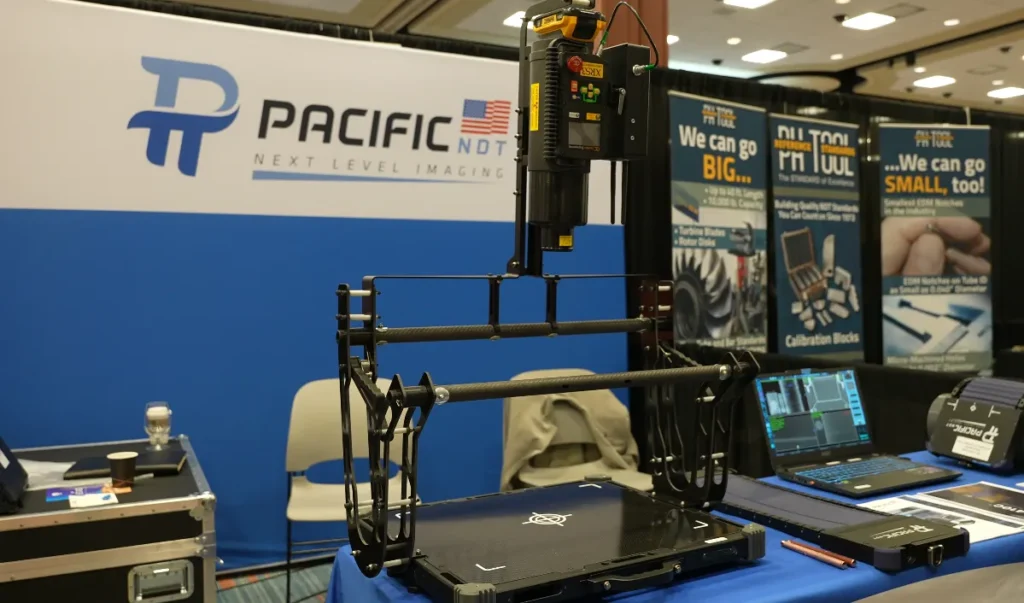Pacific NDT approach transforming NDT radiography
In the context of non-destructive testing (NDT), the advancement of digital technology has changed the way companies approach industrial inspection. In this transition, Pacific NDT has played a key role by offering NDT radiography solutions designed to meet the real-world challenges of the field technician.
Abhinav Singh, President of Pacific NDT, explained during his participation in the PANNDT event, that his company has grown with a mission to design plug and play systems for technicians. This design philosophy has been one of the pillars for expanding to more than 25 countries since its founding in 2015.
Pix Raven: a solution designed for the field
One of the company's featured products is PiX Raven, a digital radiography system that has gained traction in the electrical sector. Designed specifically for the inspection of transmission line inspection, PiX Raven consists of a digital detector, a carbon fiber structure, a control unit and an X-ray system, all integrated with software that operates from a rugged tablet.
With the push of a button, the technician can activate the trigger, receive the image and transfer it wirelessly. This simplified workflow has been well received by utilities and energy companies looking to identify defects such as spiral fractures, air cavities or incomplete welds efficiently.
Advantages over film radiography
Switching from film systems to digital solutions such as those offered by Pacific NDT has a direct impact on operational performance. Singh points out that many companies, especially in the oil and gas sector, are adopting these technologies because they can drastically reduce exposure times and radiation levels.
While a film image could take six minutes to capture, digital systems such as PiX Raven achieve similar results in less than 30 seconds. This improvement represents not only efficiency, but also a significant reduction in operating costs and exposure risks for technicians.

Sectors leading adoption
According to Singh, the rate of adoption of digital radiography systems depends on investment capacity, which is why industries, such as the oil industry, have been the first to incorporate digital NDT radiography. These companies require compliance with regulations such as ASME Section V for digital detectors, which drives the use of more advanced and reliable systems.
Pacific NDT's growth in countries in Latin America, Asia and Europe reflects the versatility of its solutions, capable of adapting to diverse needs, from inspections in oil facilities to controls in power plants or critical structures.
Artificial Intelligence at the service of NDT
In an effort to be at the forefront, the company is developing solutions based on artificial intelligence, and its ADR (Assisted Defect Recognition) system is the first step in integrating deep learning algorithms into its deep learning into weld inspection flows. This system, still in its initial phase, aims to automate the recognition of defects in captured images, enabling faster preliminary classification.
What we are doing is having a team of engineers focusing on deep learning, collecting a lot of data from the field and then testing and running the deep learning algorithms and seeing.
Abhinav Singh.
While the use of AI in NDT is still emerging, the company's initiative demonstrates a clear intention to also lead this aspect of the digital evolution in industrial inspection.
Global support and service strategy
A key aspect of the company's strategy is after-sales support, where, although manufacturing is done in the U.S., the company has been able to establish strategic alliances with technical agents in countries such as India and Germany to provide local support through this approach.
In addition, they are implementing a “hot swap” system, a preventive and reactive technical support strategy to ensure operational continuity for their customers, especially in regions where there is no immediate service center, so that if equipment fails, it can be replaced quickly. This system minimizes downtime, which is critical in sectors such as energy, oil and gas, and defense.
A future driven by technical expertise
The interview with Abhinav Singh reveals a business philosophy that combines advanced technology with a deep understanding of the field. His focus on out-of-the-box solutions, such as Pix Raven, responds directly to the needs for speed, reliability and ease of use demanded by today's industries.
With a mix of innovation, customer proximity and a global business model, Pacific NDT is positioned as a benchmark in NDT radiography, with a value proposition that evolves at the same pace as the demands of the industry.
For more content on PANNDT 2025, visit ourYouTube channel and our LinkedIn profile.
Source: Inspenet.


